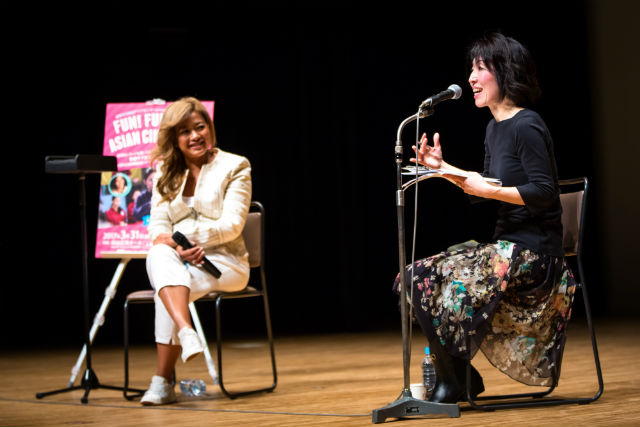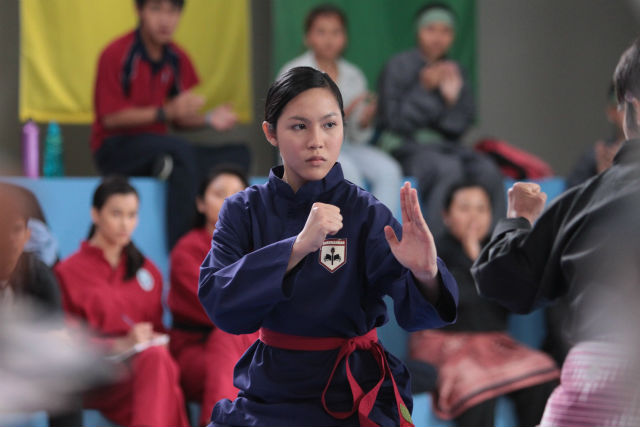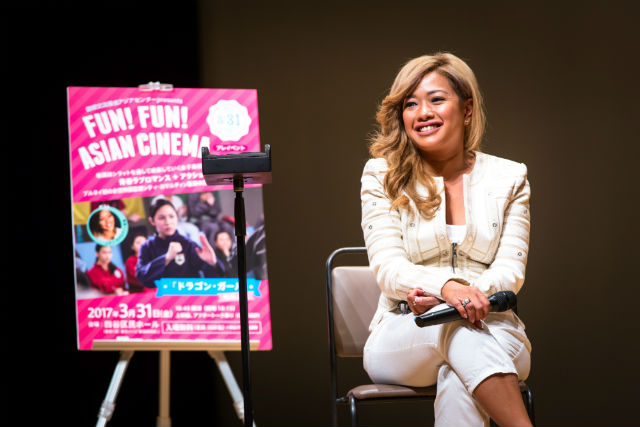
ASIA HUNDREDS is a series of interviews and conference presentations by professionals with whom the Japan Foundation Asia Center works through its many cultural projects.
By sharing the words of key figures in the arts and cultures in both English and Japanese and archiving the "present" moments of Asia, we hope to further generate cultural exchange within and among the regions.
The Bruneian Film Industry and Everyday Life

Yumi Matsushita (hereinafter Matsushita): I hope you all enjoyed Yasmine [Japanese title Dragon Girl]. I think this is a story of adolescence, of growing up. And I very much liked the ending too; it is a well-structured movie. Now, let's invite Ms. Kamaluddin to the stage and open the discussion to the floor for any questions or comments.
Audience 1: I understand this is the first international feature film from Brunei. Despite developments in digital technology and the many devices that are available to us in making feature films, why is this so? Is it difficult to make films in Brunei?
Siti Kamaluddin (hereinafter Kamaluddin): There are many factors. I mean, there is no film industry per se; the industry itself is still nonexistent. I can't really give a straight answer why almost nobody really made feature films before. I had always wanted to make films, but I found it really hard because we don't have the industry, human resources, equipment, or technology. It was really hard to get it off the ground. Also, making films is not cheap; fundraising is hard and I think it is always a huge obstacle. We don't even have film schools. The infrastructure is just not there. Let me also add that we don't have associations for filmmakers or film commissions either.
Matsushita: Could you tell us a little about colleges and high schools in Brunei? I'm assuming what we see in Yasmine is a realistic depiction of everyday life in Brunei.
Kamaluddin: Absolutely. We were actually talking about that backstage, and I did want to portray everyday life in Brunei as it is. We don't take the train or ride bicycles to school, for example. In fact, when I was writing the story, my co-writer and friend who is an Indonesian screenwriter initially wanted to have Yasmine ride her bicycle to school. Apparently that was typical for Indonesian students, but I told him that it wouldn't work. He suggested, "What if she wants to go green," and I insisted, "No." In Brunei, you either drive to school, catch a ride in your friend's car, or get dropped off by your family. That's just how it is in Brunei.
Choosing and Depicting Silat

Audience 2: This is the third time that I've seen this film and I get a little teary every time. It's a lovely story about one's first love, of growing up, and about family. I think you can portray these issues through any kind of sports; I mean it didn't have to be silat.*1 So why, did you choose it; why was it silat?
*1 Silat is an indigenous form of martial arts which is said to have originated in Indonesia, Malaysia, Thailand, and Singapore.
Kamaluddin: You are right. Whenever I am asked, "What is Yasmine about?" I always tell them it is a father-daughter story. This, for me, is the core element. But it is also a coming-of-age film.
And the reason why I chose silat is that I grew up with it; we actually have it as part of PE (Physical Education) at school. I was never good at it, but I always loved watching; it is just so beautiful. But when I was doing research for writing the script and visited many secondary schools and high schools, I found out that many of them no longer even had silat clubs. It was really sad because it is a Malay martial arts that goes back centuries and was once popular in Brunei, and, despite being a country with a small population, we were actually quite good at it; we won many medals, even gold ones, in silat competitions. Even in the National Pencak Silat Competition, the annual match that celebrates the Sultan's birthday, the seats are quite empty, and the audiences are basically family members or friends of the athletes. Instead, the schools now have karate and/or taekwondo clubs, but not all of them have silat. It wasn't a "cool" sport anymore. But I thought, in this day of Twitter and Instagram, it's time to make it cool again. I am a big fan, and I wanted to use silat like a thread that joins the story and characters together. Also, there are not many silat films, so I thought, "Why not?"

Audience 3: I was very impressed by the intense scene of the match, when they fight. I liked how it contrasted against the happy, everyday scenes. I thought the coach added a nice touch too. My question is: do the athletes not wear any protective gear during matches? In Japan, we'd wear protective gear to prevent injuries, but are the matches in Brunei really like this?
Kamaluddin: Well, actually there are two types to silat. They have the combat version in which they do wear protection. But for visual purposes I didn't use it; with the gear, I thought that they look like turtles and didn't look very good [smiles]. But with the bunga silat where they perform the basic forms of silat, they don't wear this protection. The movement itself is more stylized and graceful, so it is very beautiful. And, I decided to go with this latter version for artistic expression. Liyana, the actress who played Yasmine, did most of the sparring scenes and stunts herself, so we made her wear a bit of padding. It made her look bigger than she is; she is actually much, much smaller.
- Next Page
- Local Newcomers as the Two Protagonists






